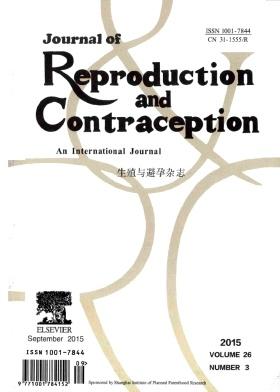睡眠特征和夜班工作与多囊卵巢综合征自我报告诊断的关联:一项基于问卷的横断面研究
IF 0.7
4区 医学
Q4 OBSTETRICS & GYNECOLOGY
引用次数: 0
摘要
目的:探讨中国女性睡眠特征与夜班工作与多囊卵巢综合征(PCOS)发病风险的关系,并探讨其与PCOS患者不孕的关系。方法:于2021年3月21日至2021年4月31日,在线招募3927名患有或未患有PCOS的中国女性。所有参与者都完成了基于微信的电子问卷。使用匹兹堡睡眠质量指数来测量睡眠特征。结果:共有2871名女性纳入最终分析。睡眠时间(优势比[OR], 0.857;95%可信区间[CI], 0.763-0.963),睡眠中点(OR, 1.142;95% CI, 1.049-1.244),睡眠障碍(OR, 1.320;95% CI, 0.957-1.146),日间功能障碍(OR, 1.136;95% CI, 1.030-1.253)和夜班工作(OR, 1.628;95% CI, 1.264-2.097)与PCOS的高风险相关。在调整混杂因素(包括年龄、体重指数、吸烟状况、咖啡和茶饮用状况)后,睡眠障碍(OR, 1.314;95% CI, 1.111-1.555),日间功能障碍(OR, 1.143;95% CI, 1.034-1.264),夜班工作(OR, 1.800;95% CI, 1.388-2.333)仍然相关。此外,睡眠障碍(OR, 1.887;95% CI, 1.400-2.542)和主观睡眠质量(OR, 1.299;95% CI, 1.037-1.627)与PCOS患者不孕和睡眠障碍相关(OR, 1.750;95% CI, 1.281-2.390)在校正混杂因素后仍然显著。结论:睡眠障碍、日间功能障碍和夜班工作与PCOS显著相关。筛查睡眠障碍并提供适当的治疗可能是治疗多囊卵巢综合征及其长期并发症的潜在策略。本文章由计算机程序翻译,如有差异,请以英文原文为准。
Association of sleep characteristics and night shift work with self-reported diagnosis of polycystic ovary syndrome: a questionnaire-based cross-sectional study
Objective: To examine the association between sleep characteristics and night shift work and the risk of polycystic ovary syndrome (PCOS) in Chinese women and to investigate their relationship with infertility in PCOS. Methods: From March 21, 2021 to April 31, 2021, 3927 Chinese women with or without PCOS were recruited online. All participants completed WeChat-based electronic questionnaires. Sleep characteristics were measured using the Pittsburgh sleep quality index. Results: A total of 2871 women were included in the final analysis. Sleep duration (odds ratio [OR], 0.857; 95% confidence interval [CI], 0.763–0.963), sleep midpoint (OR, 1.142; 95% CI, 1.049–1.244), sleep disturbance (OR, 1.320; 95% CI, 0.957–1.146), daytime dysfunction (OR, 1.136; 95% CI, 1.030–1.253), and night shift work (OR, 1.628; 95% CI, 1.264–2.097) were associated with a higher risk of PCOS. After adjusting for confounders, including age, body mass index, smoking status, and coffee and tea drinking status, sleep disturbance (OR, 1.314; 95% CI, 1.111–1.555), daytime dysfunction (OR, 1.143; 95% CI, 1.034–1.264), and night shift work (OR, 1.800; 95% CI, 1.388–2.333) remained associated. In addition, sleep disturbance (OR, 1.887; 95% CI, 1.400–2.542) and subjective sleep quality (OR, 1.299; 95% CI, 1.037–1.627) were associated with infertility in women with PCOS, and sleep disturbance (OR, 1.750; 95% CI, 1.281–2.390) remained significant after adjusting for confounders. Conclusions: Sleep disturbance, daytime dysfunction, and night shift work are significantly associated with PCOS. Screening for sleep disturbances and providing appropriate treatment could be potential strategies for managing PCOS and its long-term complications.
求助全文
通过发布文献求助,成功后即可免费获取论文全文。
去求助
来源期刊

Reproductive and Developmental Medicine
OBSTETRICS & GYNECOLOGY-
CiteScore
1.60
自引率
12.50%
发文量
384
审稿时长
23 weeks
 求助内容:
求助内容: 应助结果提醒方式:
应助结果提醒方式:


